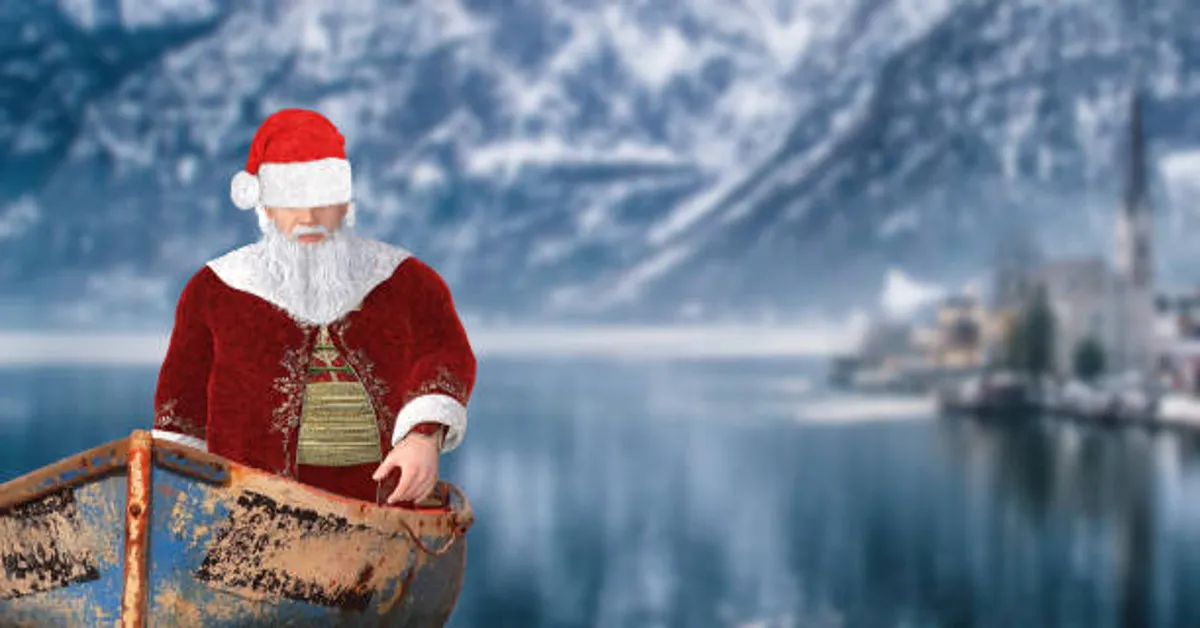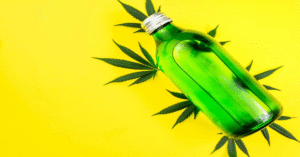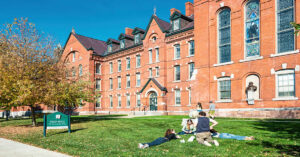In a world where the value of water is often taken for granted, the idea of a benevolent figure who travels the globe to bring safe, life-sustaining water to those in need feels like something out of a fairy tale. Yet, the character of Water Santa represents more than just a whimsical story — he is a powerful symbol of compassion, resourcefulness, and the urgent global call to provide clean water for every human being. This character blends the joy and generosity often associated with festive traditions with the deep humanitarian mission of solving water scarcity, inspiring both children and adults to view clean water not as a luxury but as a right. By imagining a figure who appears wherever thirst, drought, and contamination threaten lives, we humanize one of the most pressing issues of our time while offering a hopeful path forward.
The creation of Water Santa is not just a piece of creative storytelling; it is an embodiment of the desire to unite people across cultures, faiths, and borders in the shared recognition of our planet’s most essential resource. Where Santa Claus brings gifts wrapped in ribbons, Water Santa brings barrels, tanks, and filtration kits, each gift wrapped in the promise of life, dignity, and opportunity. His sleigh is not pulled by reindeer but powered by solar pumps, bicycles, boats, and sometimes simply the determination of those who walk alongside him. Through his story, we learn that water is more than just a drink; it is a foundation for health, education, economic stability, and peace.
The Origin of Water Santa
The mythos of Water Santa begins in a small, drought-stricken village, where a kind-hearted traveler once arrived carrying not food or gold, but containers of fresh water. This stranger, moved by the suffering he saw, promised that no matter where he went, he would always find a way to bring water to those without. Over time, his deeds spread from one village to the next, and the tales grew — he was said to appear at the edge of deserts, on the shores of isolated islands, and in the high mountain valleys where springs had dried up. Children began to draw pictures of him wearing blue robes trimmed with silver waves, carrying a magical canteen that never ran dry. Elders spoke of him as a spirit of renewal, one who carried with him not only physical water but the hope that tomorrow could be better than today.
Symbolically, Water Santa’s colors reflect his mission: blue for the purity and clarity of clean water, white for the hope and peace that flow from health, and green for the environmental harmony he seeks to restore. His tools are not just buckets and bottles, but also education and empowerment, for he knows that to truly solve the water crisis, people must understand how to care for and conserve this gift. His origin story inspires countless acts of kindness — individuals and organizations taking up the mantle of “Water Santa” in their own communities, ensuring the legend becomes a movement.
The Mission and Importance of Clean Water
At the heart of Water Santa’s mission is the recognition that clean water is not a privilege, but a fundamental human right. Without it, health deteriorates, education falters, and economic development stalls. In many parts of the world, people — especially women and children — must walk for hours each day to fetch water, often from sources that are unsafe. These journeys rob them of time for school, work, or rest, and the contaminated water they bring home often causes illness. The mission of Water Santa is to reverse this cycle by ensuring that clean, accessible water flows where it is needed most.
Clean water is the first line of defense against diseases such as cholera, dysentery, and typhoid. It is also a cornerstone of maternal and child health, as safe water during childbirth and in early childhood dramatically reduces mortality rates. Beyond health, water is essential for growing food, generating energy, and supporting industry. Water Santa’s mission, therefore, is not just about quenching thirst but about enabling the full potential of individuals and communities. By delivering clean water, he also delivers opportunities for education, economic growth, and social stability.
The Global Water Challenge
Water Santa’s work is set against a challenging backdrop. Globally, billions of people still lack access to safely managed drinking water services. Climate change, population growth, pollution, and infrastructure decay are all intensifying the problem. In some areas, rivers have dried up due to shifting rainfall patterns, while in others, floods contaminate once-clean wells. Industrial waste, agricultural runoff, and inadequate sanitation facilities further compromise water quality. These challenges require urgent action, and Water Santa’s story serves as a reminder that solutions must be both immediate and sustainable.
His approach acknowledges the complexity of the crisis. Short-term relief, such as delivering bottled water or tankers, is essential in emergencies, but long-term change demands investment in local infrastructure, water treatment systems, and conservation practices. Water Santa champions a holistic perspective: protect natural watersheds, adopt efficient irrigation, recycle wastewater where possible, and empower communities to manage their resources. In his legend, each place he visits receives not only water but also the tools and training to sustain it.
Water Santa’s Methods of Delivering Water
The magic of Water Santa lies in his ability to adapt his methods to the needs of each place he visits. In remote desert communities, he is said to arrive with camel caravans loaded with collapsible water tanks and solar-powered desalination units. In flood-prone regions, he provides portable filtration systems that remove bacteria and viruses from contaminated floodwaters. On islands, his arrival might involve boats filled with rainwater harvesting kits, designed to collect and store the precious resource from every rainfall.
Yet beyond the myth, these methods mirror real-world technologies that could transform water access:
- Rainwater harvesting systems to capture and store rainfall for household and agricultural use.
- Solar-powered water pumps to draw groundwater without relying on fossil fuels.
- Low-cost filtration devices capable of purifying even the dirtiest sources.
- Community-run water kiosks that offer affordable, safe drinking water while creating local jobs.
Water Santa’s magic is not in supernatural powers but in the combination of ingenuity, empathy, and action. His story reminds us that sometimes, the most life-changing gift is simply a clean cup of water.
Educational Role in Hygiene and Conservation
Delivering water is only part of the mission; ensuring it is used wisely and safely is equally important. In the Water Santa tradition, every delivery comes with education — lessons on handwashing, safe storage, and the importance of keeping water sources clean. He teaches children songs and games about conservation, making these critical lessons fun and memorable. Adults receive guidance on repairing leaks, using water-efficient irrigation, and protecting local streams from pollution.
In his workshops, Water Santa often tells the tale of “the invisible bucket” — a metaphor for the finite nature of water resources. Every time we waste water, a hole appears in the bucket; every time we conserve, we patch it. This simple story, told in countless villages, fosters a culture of respect for water that lasts long after he has moved on to the next community. By coupling education with delivery, he ensures that the water given today will still be available tomorrow.
Partnerships and Community Involvement
No mission of this scale can be carried out alone. In the legend, Water Santa works closely with local “elves” — which in reality are community volunteers, health workers, and local leaders. These partners know the land, the people, and the challenges better than any outsider could. By engaging them in planning and implementation, Water Santa ensures that solutions are culturally appropriate and sustainable.
Partnerships also extend to global allies: engineers who design innovative purification systems, scientists who monitor water quality, and educators who develop curricula about conservation. Through this vast network, Water Santa’s impact grows exponentially. The legend inspires people to volunteer their time, donate resources, or simply adopt better water habits in their daily lives.
Impact Stories
In the storytelling tradition, every hero has tales of the lives they’ve touched. One such story speaks of a small mountain school where children once missed weeks of lessons each year due to waterborne illnesses. After Water Santa arrived with a purification unit and taught the students how to use it, attendance soared and test scores improved. Another tale comes from a coastal fishing village, where women who once spent half their day walking for water now run thriving businesses, using the hours saved to weave baskets and repair fishing nets.
These impact stories, while fictional in the legend, mirror countless real-world examples where access to clean water has transformed communities. They reinforce the truth at the heart of Water Santa’s mission: when you bring water, you bring life, health, and opportunity.
Joining Water Santa’s Mission
The beauty of Water Santa’s story is that it invites everyone to participate. You don’t need a magical canteen to be part of the movement — you can start by conserving water in your own home, supporting organizations that provide clean water, or volunteering in local projects. Schools can adopt Water Santa as a seasonal figure who inspires service projects, while businesses can integrate water stewardship into their operations. The legend becomes most powerful when it moves from myth to action.
Long-Term Vision
Water Santa’s ultimate goal is to make himself unnecessary. In his vision of the future, every community has the infrastructure, knowledge, and resilience to secure its own water supply. Natural ecosystems are restored, rivers run clean, and every child can take a sip without fear. His work would then be complete, and the mantle could pass to the next generation of guardians — ordinary people who refuse to let thirst define anyone’s life.
Conclusion
The story of Water Santa is a reminder that hope, generosity, and action can flow together like the clearest stream. While the character is fictional, the needs he represents are painfully real, and the solutions he embodies are within our reach. By embracing the spirit of Water Santa, we not only bring water to those in need but also spread a message of unity and responsibility that transcends borders and cultures. In a thirsty world, perhaps the greatest gift we can give is a well that never runs dry.
ALSO READ: HY Band and Hy Island: Music and Cultural Heritage
Frequently Asked Questions (FAQs)
1. Who is Water Santa?
Water Santa is a symbolic character representing the mission to deliver clean, safe water to communities that lack it. He blends the generosity of traditional gift-giving figures with the humanitarian urgency of solving the global water crisis.
2. Is Water Santa a real person or a fictional creation?
Water Santa is fictional, but the challenges he addresses — such as water scarcity and contamination — are real. Many individuals and organizations around the world are working toward the same goals he represents.
3. What does Water Santa deliver besides water?
In addition to providing clean water, Water Santa delivers education on hygiene, tools for water conservation, and resources for communities to manage their own water supply sustainably.
4. How can someone join Water Santa’s mission?
Anyone can join by conserving water at home, supporting clean water charities, volunteering in local projects, or educating others about the importance of water stewardship.
5. Why is clean water considered a human right?
Clean water is essential for health, food production, sanitation, and overall well-being. Without it, individuals cannot thrive, and communities cannot develop sustainably, making it a fundamental human right recognized by the United Nations.









